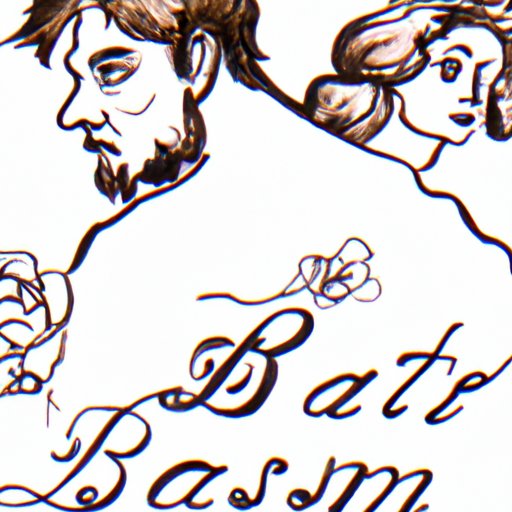
Introduction
“Beauty and the Beast” is a timeless tale that has captivated audiences for centuries. From its origins as an oral tradition to its modern-day adaptations in film and literature, the story has undergone numerous transformations, yet its message remains the same. In this article, we will explore the origins of the story and its significance, delve into the life of its author, and analyze the enduring themes that continue to resonate with audiences today.
A Biographical Take on the Author
Madame Gabrielle-Suzanne Barbot de Villeneuve was a French author born in 1695. She was a novelist, playwright, and translator who wrote numerous works throughout her lifetime. However, she is best known for her creation of the original “Beauty and the Beast” tale, which she published in 1740 as part of a collection of fairy tales. Villeneuve was a member of French high society and had a close relationship with the royal court. Her social status is reflected in her literature, often featuring aristocratic characters.
The Evolution of the Story
The story of “Beauty and the Beast” has evolved over time, with adaptations taking place in literature and film. The tale has been reimagined by countless authors across the globe. Today, it is a beloved children’s story thanks to adaptations like Walt Disney’s 1991 animated film. Despite the changes, the story’s original themes and motifs have remained constant. Throughout various versions, the tale has always celebrated inner beauty, kindness, and compassion. The Beast, ultimately, is revealed to be a prince, and redemption through love is achieved. Notable adaptations include Angela Carter’s feminist retelling in her 1979 short story “The Tiger’s Bride” and Robin McKinley’s novel “Beauty,” which was published in 1978.
The Significance of the Story
The story of “Beauty and the Beast” explores themes of love, sacrifice, and redemption. However, it also has social commentary on social classes. Beauty is portrayed as compassionate despite being from a lower social class than the Beast, who was formerly an aristocrat. The Beast is initially unkind but eventually redeemed by Beauty’s love. Additionally, there is a feminist commentary present in the story’s portrayal of Beauty. Despite societal attitudes surrounding feminine beauty in the 18th century, Beauty’s character is valued for her kindness and compassion rather than her physical appearance.
The Origins of the Story
The story has French roots and is often categorized as a fairy tale, a genre significantly influenced by the courtly romance tradition. The story’s link to the tradition of courtly romance is evident in the Beast’s transformation into a prince. Additionally, the story’s opening lines reference the dawn of true love, a recurring theme in courtly literature. The story’s fairy tale status is solidified by the story’s repeated motifs and the enchantments present.
The Legacy of the Story
The popularity of “Beauty and the Beast” has been widespread and has continued to impact culture and society. The story has contributed to a broadening of the feminist movement and has become a staple in popular culture. The story’s popularity has led to adaptation across various media, including novels, films, and television programs like Once Upon a Time. It has also inspired numerous moral lessons and parodies.
Conclusion
“Beauty and the Beast” is a story that has stood the test of time for a reason. Its themes of kindness, compassion, love, redemption despite social structure are timeless and continue to resonate. Despite the numerous adaptations of the story, its message remains true throughout different interpretations and cultures. It continues to inspire people worldwide.





